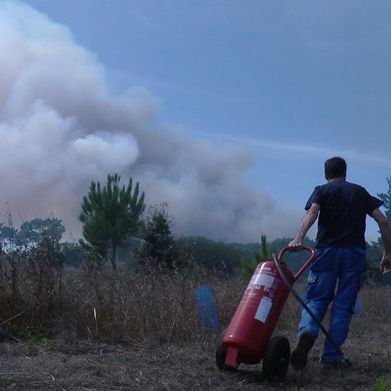
Joaquim Pinto’s What Now? Remind Me opens on a rapturous image of a slug slowly — slooowly — making its way across a rough patch of twigs. The shot primes you for the rest of the movie. It slows down your heartbeat, attunes you to tiny changes within the frame, and prepares you for the drama of nature. By the time some nondescript shadows start to dance over the slug, it’s as if an army has invaded.
There is simply no way to do justice to the majesty of What Now? Remind Me. A description of its subject matter would fall pathetically short and sound impossibly grim. It’s a nearly three-hour documentary, basically a video diary, of a year in the life of the HIV-positive Pinto, as he goes between his bucolic home in Portugal, where he lives with his husband Nuno Leonel, and Madrid, Spain, where he is undergoing a clinical trial for an unapproved treatment for Hepatitis C. (Hep C has led to an infection that’s caused cirrhosis, a situation exacerbated by the HIV.) For all that, this is not a medical documentary — even though there’s a lot of medicine and illness in it. It’s not even a particularly sad documentary, even though there’s plenty of sadness in it.
Pinto’s perspective, even through all his pain, is lush, gentle, contemplative. He can be very direct, but he can also be touchingly mysterious. Telling us that his husband Nuno doesn’t want to be part of the film, Pinto shoots footage of him, then tells us, “I don’t think you’ll get to know Nuno.” It’s an offhand comment, beguiling in what it leaves unsaid. But the director can also be playful: “The doctors told me to stay optimistic, so I’m starting with a smile,” he says early on in the film, then cues a burst of rock music and superimposes a giant, vaguely terrifying X-ray image of his decaying teeth over a lovely shot of the road passing by: a sudden skeleton’s smile to greet you into this weird, mesmerizing movie.
Perched between the cold, clinical world of illness and the redemptive world of nature, Pinto tries to show how time has slowed for him — not only due to the paralyzing effects of his treatment, but also because he’s more in touch with what’s around him. He gives the same scale to a dragonfly perched on a small branch as he does to a needle that might help save his own life. Pinto and his husband have adopted several stray dogs over the years; they helped the dogs recover, and now the dogs are helping them. “We still see ourselves at the top of a food chain that goes from simple to complex, from primitive to evolved, from darkness to light,” he ruminates. “In fact, we are survivors of a long, common history of many millions of years. We are just recent.” Onscreen, bacteria and viruses — our fellow survivors — take on beautiful, frightening forms.
The still, fixed nature of Pinto’s gaze can be both enthralling and nausea-inducing. At one point, he shows us a close-up of two rays of sunlight hitting the same spot on a wooden floor — only at this distance, it looks like an otherworldly landscape on the screen. At another point, Pinto films himself as he lies in bed, discussing the crippling side effects of Interferon. “I could call it inertia,” he says. “It is feeling one’s will disconnected from one’s body.” His philosophical spin is betrayed by the grievously visceral nature of this moment: Throughout the scene, Pinto remains perfectly, unnaturally still — as if even the slightest movement might bring on further pain.
What Now? Remind Me is all over the place, but it never feels messy or lax. It mimics the free-associative nature of memory. Pinto reflects on friends and collaborators he’s lost. Stray images from his youth — split seconds long — speak to the heartbreak of physical decay. But the film is also suffused with the beauty of the now. Pinto shoots one idyllic sojourn with Nuno and their dogs in a field from a distance: The family is a blur in the background, while a blade of grass stands in perfect focus in the foreground. The shot initially has the feeling of a memory being born; as if Pinto is capturing this moment of happiness even as it recedes into the past. Then one of the dogs wanders to the camera, as if sensing the presence of the viewer and inviting us to join them. Just like that, the illusion of loss is broken; you begin to sense that their happiness might be in this world a little while longer. It’s but one example of how What Now? Remind Me shows that cinema can help repair the soul.


